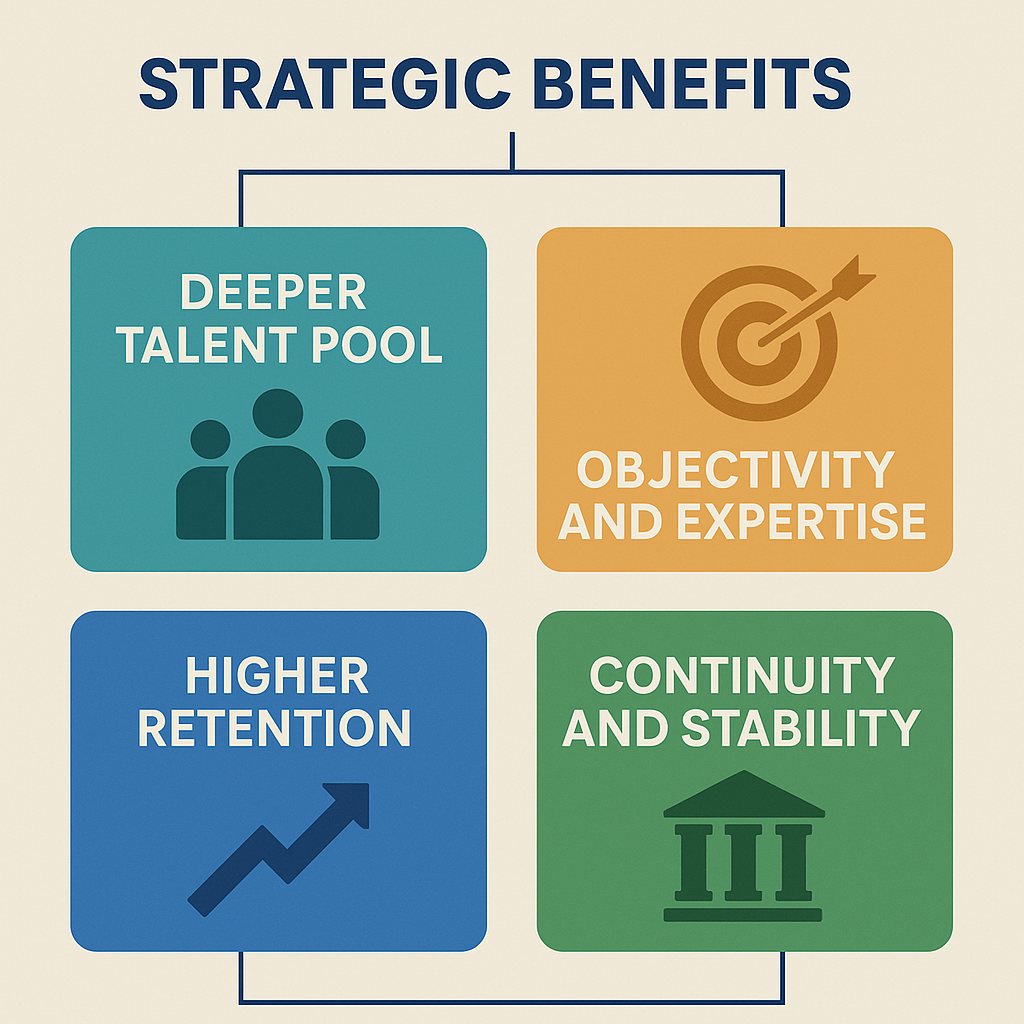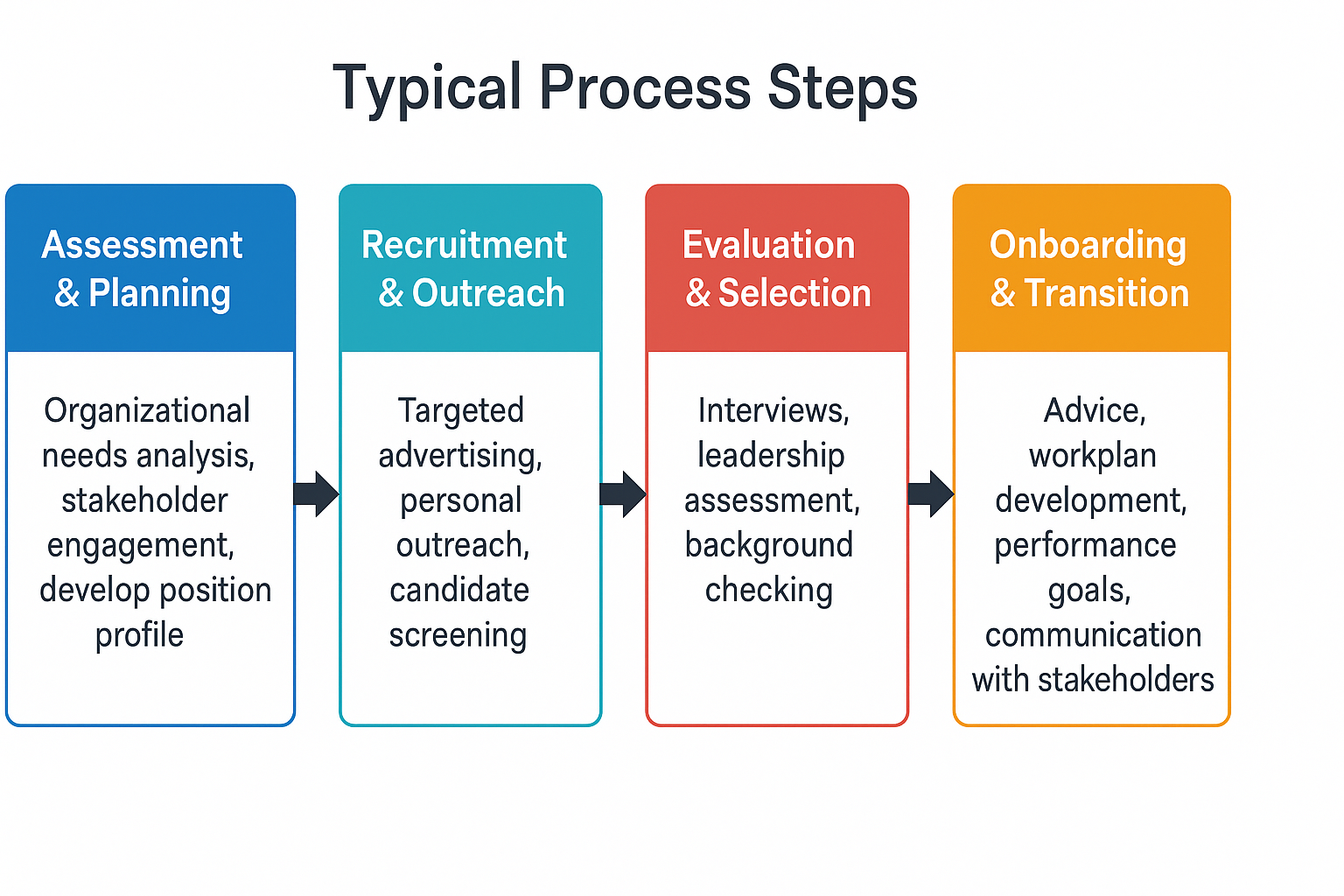Nonprofit organizations and healthcare institutions rely heavily on visionary leadership to drive their mission, inspire staff, and strengthen community impact. Yet, when it comes time to replace a departing executive, many boards find themselves at a crossroads. Leadership changes can be one of the most pivotal—and disruptive—moments in a nonprofit’s lifecycle. Mishandled transitions risk donor confidence, program stability, and staff morale.
This is where nonprofit executive search firms play a critical role. By offering expertise in recruitment strategy, leadership assessment, and transition planning, these firms ensure that nonprofit leadership transitions are not only smooth but also strategically aligned with the organization’s future goals. In fact, research shows that nonprofits who engage professional executive search partners often experience higher retention, stronger alignment with mission, and more effective onboarding of new leaders.
In this article, we’ll explore the functions, process, and strategic benefits of working with an executive search firm during a nonprofit CEO search or other leadership transition. We’ll also cover why specialized nonprofit executive recruitment is vital for organizational continuity and long-term success.
Why Leadership Transitions Are So Critical in the Nonprofit Sector
Unlike for-profit organizations, nonprofits often balance complex stakeholder relationships—board members, staff, donors, volunteers, and beneficiaries. A change in leadership affects not only the operational structure but also the external perception of stability and trust. Using an executive search firm can help with this transition.
Mission Continuity: A strong leader ensures that programs and initiatives remain aligned with the organization’s purpose.
Donor Confidence: Funders want assurance that the nonprofit is stable and capable of delivering promised outcomes.
Staff Retention: Employees look to leadership for guidance, motivation, and culture. Transitions without clarity can result in staff turnover.
Community Impact: Beneficiaries depend on consistent services. Disruption at the top can ripple down to program delivery.
Executive search firms specialize in managing these dynamics while identifying candidates who bring the right combination of vision, skills, and cultural alignment.
Key Functions of Executive Search Firms
1. Assessment and Planning
Search firms begin their strategic planning for nonprofits by conducting a comprehensive organizational assessment. They interview board members, staff, and key stakeholders to clarify leadership needs and define success metrics. This step often includes:
Stakeholder surveys to understand organizational culture and priorities
Position profiles that reflect both current needs and long-term goals
Benchmarking leadership skills against sector best practices
This planning ensures the search is tailored to the nonprofit’s mission and strategy, not just a generic executive role.
2. Recruitment and Outreach
Posting an executive job online only reaches active job seekers. Nonprofit executive search firms go further by tapping into:
Deep professional networks built over years in the sector
Passive candidates—leaders not actively job-hunting but open to new opportunities
Diverse talent pools across race, gender, and cross-sector experience
By casting a wider and more inclusive net, search firms increase the chances of finding visionary leaders who align with organizational values.
3. Candidate Evaluation
Leadership is about more than resumes. Firms use structured assessments to measure:
Strategic thinking: Can the candidate guide the organization into the future?
Cultural fit: Does the candidate align with nonprofit values and community expectations for retaining top nonprofit leadership talent?
Change management skills: Can they lead through transitions without losing momentum?
This professional evaluation process reduces bias, strengthens objectivity, and ensures the final candidates are truly mission-aligned.
4. Stakeholder Engagement
Transparency is critical during a nonprofit leadership transition. Search firms involve stakeholders at every stage:
Boards participate in interviews and evaluations
Staff may provide input on organizational culture and needs
Donors are reassured of stability through communication updates
This inclusive approach builds trust, reduces resistance, and creates buy-in for the incoming leader.
5. Onboarding and Transition Support
Many firms extend their role beyond hiring by offering:
Onboarding workplans with performance goals for the first 90 days
Guidance for board-executive relationships and role clarity
KPI development to measure early success
Transition coaching to integrate leaders smoothly into the organization
This added support helps new executives succeed faster, preventing early turnover and preserving organizational momentum.
Strategic Benefits of Partnering with an Executive Search Firm

1. Deeper Talent Pool
Nonprofit executive recruitment firms have access to broader and more diverse candidate pipelines, including leaders with transferable skills from healthcare, education, or even the private sector.
2. Objectivity and Expertise
By applying proven assessment tools, search partners remove bias and focus on skills, cultural alignment, and strategic potential.
3. Customized Search Process
Each nonprofit is unique. Search firms tailor the process to reflect mission, strategic goals, and stakeholder expectations.
4. Continuity and Stability
Interim leadership, structured timelines, and communication strategies help keep donors, staff, and communities confident during transitions.
Typical Process Steps in a Nonprofit CEO Search
Step
Description
Assessment & Planning
Organizational needs analysis, stakeholder engagement, development of position profile
Recruitment & Outreach
Targeted advertising, personal outreach, leveraging networks of passive candidates
Evaluation & Selection
Multi-round interviews, leadership assessments, reference checks, cultural fit analysis
Onboarding & Transition
Goal setting, board/CEO communication, first-90-day workplans, integration coaching

The Risks of Going It Alone
Some boards attempt to manage leadership transitions internally to save costs. However, this approach often comes with risks:
Limited candidate pool due to reliance on public job postings
Bias in decision-making without structured evaluation tools
Board burnout from managing a complex, time-consuming process
Unclear onboarding leading to early leadership turnover
In contrast, a professional search partner brings efficiency, objectivity, and stronger long-term outcomes.
Conclusion
Leadership transitions can either strengthen or destabilize a nonprofit. By leveraging the expertise of nonprofit executive search firms, boards gain access to top-tier talent, reduce hiring risks, and ensure smooth organizational continuity. Whether it’s a nonprofit CEO search or another executive role, professional nonprofit executive recruitment is a critical investment in stability, mission alignment, and long-term success.
For healthcare and nonprofits organizations mergers and transitions, the right leader can mean the difference between maintaining the status quo and achieving transformative growth. Partnering with an executive search firm ensures your next chapter begins with strength, clarity, and confidence.
Let Glick Davis & Associates Help Your Nonprofit Find Your Ideal Executive Candidate.
Frequently Asked Questions
Executive search firms provide access to broader talent pools, reduce bias in selection, and streamline the search process, saving nonprofits valuable time and resources.
Nonprofit Turnaround: A Guide for Nonprofit Leaders, Consultants and Funders

